Are you considering using solar panels to heat your hot tub but not sure where to start?
This article explores everything you need to know about solar panels – from how they work to the different types available.
We discuss the benefits of using solar panels, including cost savings and environmental advantages.
Find out whether solar panels can effectively heat a hot tub, the different methods available, and the steps involved in setting up a solar-powered hot tub system.
Learn about the costs associated with using solar panels to heat a hot tub to help you make an informed decision.
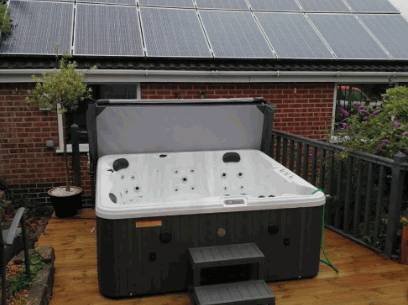
What Are Solar Panels?
Solar panels are devices that convert sunlight into electricity using photovoltaic cells, making them a key component of solar energy systems that harness renewable energy for various applications.
The working principle of solar panels lies in the photovoltaic effect, where sunlight is absorbed by the cells, creating an electric field across layers of silicon. As the sunlight hits the cells, the electrons are released, generating a flow of electricity. This sustainable energy source is utilized in residential homes, commercial buildings, and even spacecraft to provide power. Solar panels play a crucial role in reducing dependence on fossil fuels, thus helping to mitigate climate change by lowering carbon emissions.
Check out: How To Fit Solar Panels On Roof
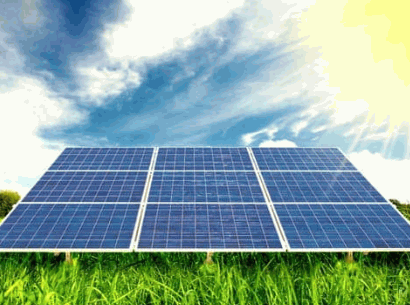
How Do Solar Panels Work?
Solar panels work by capturing sunlight through photovoltaic cells, which then convert the absorbed solar energy into direct current (DC) electricity; this DC electricity is subsequently converted into alternating current (AC) using an inverter to power various electrical devices.
Photovoltaic cells within solar panels are made up of semiconductor materials like silicon, which generate an electric current when exposed to sunlight. These cells contain negatively and positively charged layers, allowing electrons to move and create an electric field. When sunlight strikes the cells, it excites the electrons, enabling them to flow as electricity.
Once the DC electricity is produced by the cells, it needs to be converted to AC electricity, which is the standard form of electricity used in homes and businesses. That’s where inverters come into play. These devices transform the DC electricity into AC, ensuring compatibility with the electrical grid.
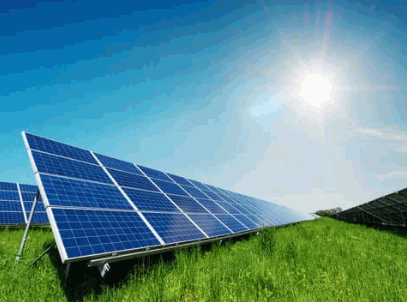
What Are The Different Types Of Solar Panels?
There are various types of solar panels that cater to different needs and applications, with the most common being Monocrystalline, Polycrystalline, and Thin-Film solar panels, each offering unique benefits and efficiencies within a solar PV system aimed at harnessing renewable energy.
Monocrystalline Solar Panels
Monocrystalline solar panels are known for their high efficiency and longevity, being made from a single continuous crystal structure, which allows them to effectively convert solar power into electricity.
One of the key advantages of Monocrystalline solar panels is their unmatched efficiency in converting sunlight into electricity. This increased efficiency means that less space is required for installation, making them ideal for rooftops and areas with limited space. Their durability ensures a longer lifespan, reducing maintenance costs in the long run. Despite being more expensive upfront compared to other types of solar panels, their higher efficiency and durability make them a cost-effective choice over time.
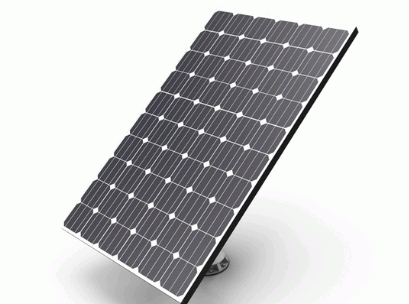
Polycrystalline Solar Panels
Polycrystalline solar panels are made from multiple silicon crystals melted together, which makes them less efficient than Monocrystalline panels but more affordable, thereby offering a balanced solution for solar energy conversion.
Despite being slightly less efficient, Polycrystalline panels are still a popular choice due to their cost-effectiveness, making them a practical option for residential and commercial installations. They are versatile and can be used in various applications, ranging from rooftop solar systems to large-scale solar farms. In comparison to Monocrystalline panels, while the latter may offer higher efficiency, Polycrystalline panels often have a better price point, making them a more budget-friendly option for those looking to harness solar power.
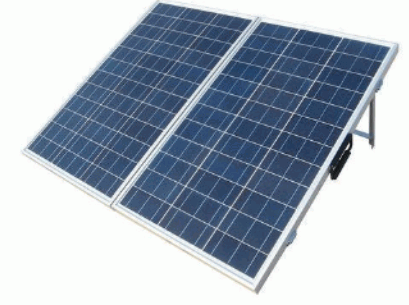
Thin-Film Solar Panels
Thin-film solar panels are constructed by layering thin sheets of photovoltaic material onto a substrate, making them lightweight and flexible, although they generally offer lower efficiency compared to crystalline-based panels.
Despite their lower efficiency, the flexibility of Thin-Film solar panels opens up a wide range of applications that benefit from their versatility. These panels can be easily integrated into curved surfaces, enabling installations on buildings, vehicles, or even portable devices. Their lightweight nature makes them ideal for situations where weight constraints are a concern. The simplified manufacturing process of Thin-Film panels contributes to cost-effectiveness, making them an attractive option for large-scale solar PV systems. While they may not have the highest efficiency levels, their performance characteristics suit specific applications where flexibility and ease of installation are valued over absolute efficiency.
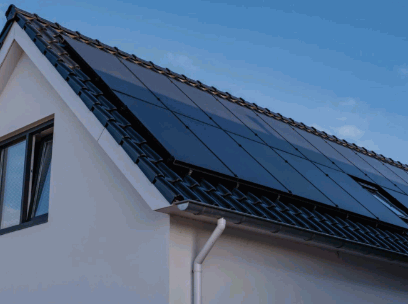
What Are The Benefits Of Using Solar Panels?
The benefits of using solar panels are numerous, including significant cost savings on electricity bills, substantial environmental benefits through the reduction of carbon footprint, and enhanced reliability in power supply by harnessing the sun’s renewable energy.
Cost Savings
One of the most compelling benefits of solar panels is the potential for significant cost savings on electricity bills, as they allow homeowners and businesses to generate their own power and reduce dependence on traditional energy sources.
By leveraging the capabilities of the sun, solar panels offer a sustainable and eco-friendly way to meet energy needs. This not only contributes to a greener planet but also translates into lower monthly expenses for users. Plus the direct savings on electricity bills, many regions offer incentives and rebates to encourage the adoption of solar power systems. These financial benefits can further enhance the overall return on investment for those opting for solar panel installation.
Environmental Benefits
Using solar panels helps mitigate environmental impacts by harnessing renewable energy from the sun, thereby reducing reliance on fossil fuels and significantly lowering the carbon footprint associated with energy production.
Solar panels play a crucial role in combatting climate change by reducing greenhouse gas emissions. By converting sunlight into electricity, they provide a clean and sustainable energy source that displaces the need for environmentally harmful coal or natural gas power plants.
The installation of solar panels promotes energy independence, allowing individuals and communities to generate their own electricity and reduce their dependence on centralized power grids. This decentralized approach enhances resilience and stability in the face of disruptions or failures in traditional energy systems.
Reliability
Solar panels provide a reliable source of energy as they harness the sun’s power, which is abundantly available and predictable, making them a dependable solution for continuous power supply even in remote areas.
One of the remarkable aspects of solar panels is their ability to function effectively in various weather conditions. Whether it’s a sunny day or a cloudy one, solar panels can still generate electricity, albeit with slightly reduced efficiency in cloudy weather. This versatility makes them a practical choice for locations that experience diverse weather patterns.
Their suitability for remote or off-grid locations is unparalleled. The independence from the traditional grid makes solar panels an ideal choice for powering remote cabins, RVs, boats, or off-grid homes. Their ability to store excess energy in batteries ensures a continuous power supply, even when the sun isn’t shining brightly.
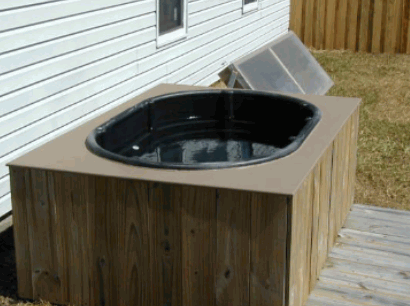
Can Solar Panels Be Used To Heat A Hot Tub?
Solar panels can indeed be used to heat a hot tub, offering an efficient, eco-friendly, and cost-effective alternative to traditional heating methods; solar-powered hot tubs utilize solar hot tub systems to capture and convert solar power into heat, ensuring a warm soak while reducing energy consumption.
Solar Hot Tub Covers
Solar hot tub covers are designed to capture and retain solar energy, helping to maintain the water temperature and reduce the need for additional heating, thus enhancing the efficiency of the hot tub.
By leveraging the capabilities of the sun, these innovative covers act as a shield, preventing heat loss and evaporation from the hot tub water. This not only conserves energy but also extends the time you can enjoy a relaxing soak in your hot tub.
Additionally, solar hot tub covers provide a cost-effective and eco-friendly way to heat your hot tub, as they do not rely solely on electricity or gas. Their smart design includes insulating layers that trap the sun’s warmth, ensuring that your hot tub stays at the perfect temperature without excessive energy consumption.
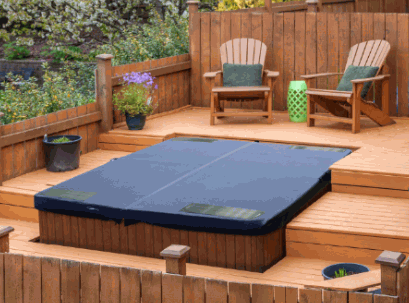
Solar Water Heating Systems
Solar water heating systems use solar heaters to capture energy from the sun and transfer it to the water in your hot tub, providing an effective and environmentally friendly way to maintain warm water temperatures.
These systems typically consist of solar collectors, a heat exchanger, a pump, and a storage tank. The solar collectors, often mounted on the roof or nearby in a sunny spot, absorb sunlight to heat a heat transfer fluid like water or antifreeze. This heated fluid then passes through the heat exchanger, where it warms up the water in the hot tub without mixing the two fluids.
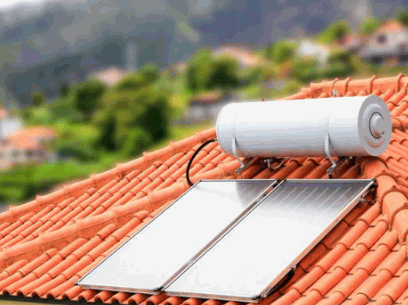
Solar-Powered Hot Tubs
Solar-powered hot tubs are equipped with solar kits that include solar hot tub heaters and controllers, allowing them to harness solar energy to efficiently heat the water and provide a sustainable hot tub experience.
The solar kit in these hot tubs typically consists of photovoltaic panels that capture sunlight and convert it into electricity, which in turn powers the heaters. The controllers help regulate the temperature, ensuring a comfortable soak every time.
One of the key advantages of using solar energy for hot tub heating is the significant cost savings in the long run, as sunlight is a free and renewable resource. Solar-powered systems contribute to reducing the carbon footprint by utilizing clean energy sources.
What Are The Steps To Using Solar Panels To Heat A Hot Tub?
Using solar panels to heat a hot tub involves several important steps, including determining the appropriate size and type of solar panels needed, installing the panels correctly, connecting them to the hot tub system, and regularly monitoring and maintaining the setup to ensure optimal performance and longevity.
Determine The Size And Type Of Solar Panels Needed
Determining the size and type of solar panels needed to heat a hot tub involves calculating the energy requirements of the hot tub and selecting solar panels that can meet these demands within the constraints of the available installation space.
When calculating the energy needs of a hot tub, you should consider factors such as the volume of water to be heated, the desired temperature increase, and the efficiency of the heating system.
- Panel efficiency plays a crucial role in the effectiveness of a solar energy system for heating a hot tub. Higher efficiency panels can generate more power in limited space.
- Space availability is another critical factor to consider when choosing solar panels. Make sure you have enough unshaded area to install the panels for optimal sunlight exposure.
- The overall system requirements, including the inverter capacity and battery storage, should be factored in to ensure a reliable and efficient setup.
Install The Solar Panels
Installing the solar panels involves selecting an optimal location that receives maximum sunlight, securely mounting the panels, and ensuring that they are angled correctly to capture and convert solar energy efficiently.
When choosing the right location for installing solar panels, consider areas with minimal obstructions like trees or buildings that might cast shadows. It is essential to place the panels facing south in the northern hemisphere or north in the southern hemisphere to maximize sunlight exposure throughout the day.
For mounting techniques, use sturdy brackets or racks to attach the panels to a roof, ground, or pole securely. Make sure to follow manufacturer guidelines for proper installation to avoid any structural damage.
The optimal orientation of the panels is crucial for peak energy production. Adjusting the tilt of the panels according to your geographical location’s latitude can significantly enhance energy capture efficiency. As a rule of thumb, the panel’s tilt should be equal to the latitude plus 15 degrees in winter and minus 15 degrees in summer to maximize energy production.
Connect The Solar Panels To The Hot Tub
Connecting the solar panels to the hot tub involves integrating the solar hot tub heater into the existing plumbing system, ensuring that the heated water is efficiently transferred to the hot tub while maintaining a consistent temperature.
When setting up a solar hot tub heater, it’s crucial to consider the flow rate and pressure requirements to guarantee optimal performance. By installing a circulation pump, the heated water can be efficiently circulated through the system, providing consistent warmth. Incorporating a temperature sensor and control unit allows for automatic adjustments, ensuring the water temperature remains comfortable and stable. It’s essential to carefully plan the layout of the piping system to minimize heat loss and maximize the effectiveness of the solar energy captured by the panels.
Monitor And Maintain The System
Monitoring and maintaining the system is crucial to ensure that the solar panels and hot tub heater are functioning optimally; this involves regularly checking the solar hot tub heater controller, cleaning the panels, and addressing any issues promptly.
Regular monitoring and maintenance play a vital role in prolonging the lifespan of your system and maximizing its efficiency. By inspecting the controller, you can ensure that settings are optimized and that the system is working as intended. Cleaning the panels prevents dust and debris from blocking sunlight absorption, ensuring your system operates at its best. In case of any issues, troubleshooting promptly can prevent small problems from escalating into larger, more costly repairs, ultimately saving you time and money in the long run.
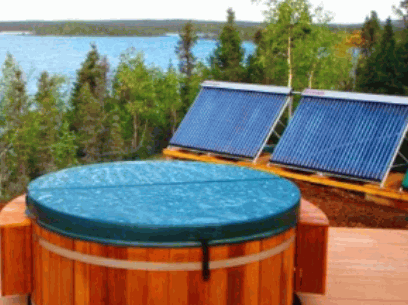
What Are The Costs Associated With Using Solar Panels To Heat A Hot Tub?
The costs associated with using solar panels to heat a hot tub can vary significantly, encompassing the initial investment for purchasing and installing the solar panels and related components, ongoing maintenance costs to ensure the system remains efficient, and the potential savings achieved through reduced energy bills over time.
Initial Investment
The initial investment includes the cost of purchasing solar panels, solar hot tub heaters, and other necessary components, as well as any fees for professional installation services to ensure proper setup and functionality.
When considering the cost of solar panels, prices can vary depending on factors such as efficiency, brand, and size. On average, a single solar panel can range anywhere from $200 to $600. Solar hot tub heaters come in different types, with prices typically falling between $1,500 to $4,000, depending on the model and capacity. Installation fees, which are crucial for a seamless integration of the system, can vary significantly and might range from $1,000 to $5,000, depending on the complexity of the project and the expertise required.
Maintenance Costs
Maintenance costs for a solar-powered hot tub system typically include regular cleaning of the solar panels, periodic checks and adjustments of the solar hot tub heater, and potential repairs or replacements of any components over time.
Regular cleaning of the solar panels is crucial to ensure maximum efficiency in harnessing solar energy. Dust, dirt, and debris can accumulate on the panels, hindering their ability to absorb sunlight efficiently. Periodic checks and adjustments of the solar hot tub heater help maintain its optimal performance and prevent any malfunctions.
As for repairs or replacements of components, these expenses can vary depending on the specific issue. It is recommended to have a professional technician inspect the system regularly to catch any potential problems early on, reducing the likelihood of major repairs down the line. Investing in routine maintenance not only prolongs the lifespan of the system but also ensures that it operates at peak efficiency, ultimately saving you money in the long run.
Potential Savings
The potential savings from using solar panels to heat a hot tub can be substantial over time, as the reduced reliance on traditional energy sources translates to lower electricity bills and a quicker return on the initial investment.
For instance, a study conducted by the National Renewable Energy Laboratory found that homeowners who invest in a solar water heating system can save up to $300-$500 per year on their utility bills. Over the long term, this can amount to thousands of dollars in savings. The payback period for solar panels used for hot tub heating is typically around 3-5 years, making it a financially attractive investment. This not only reduces the impact on the environment but also provides a significant financial benefit to the homeowner.
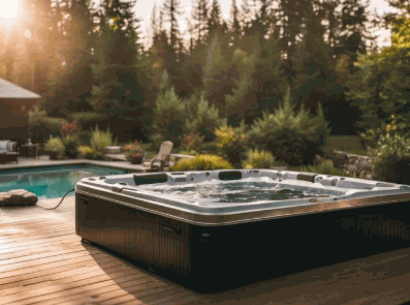

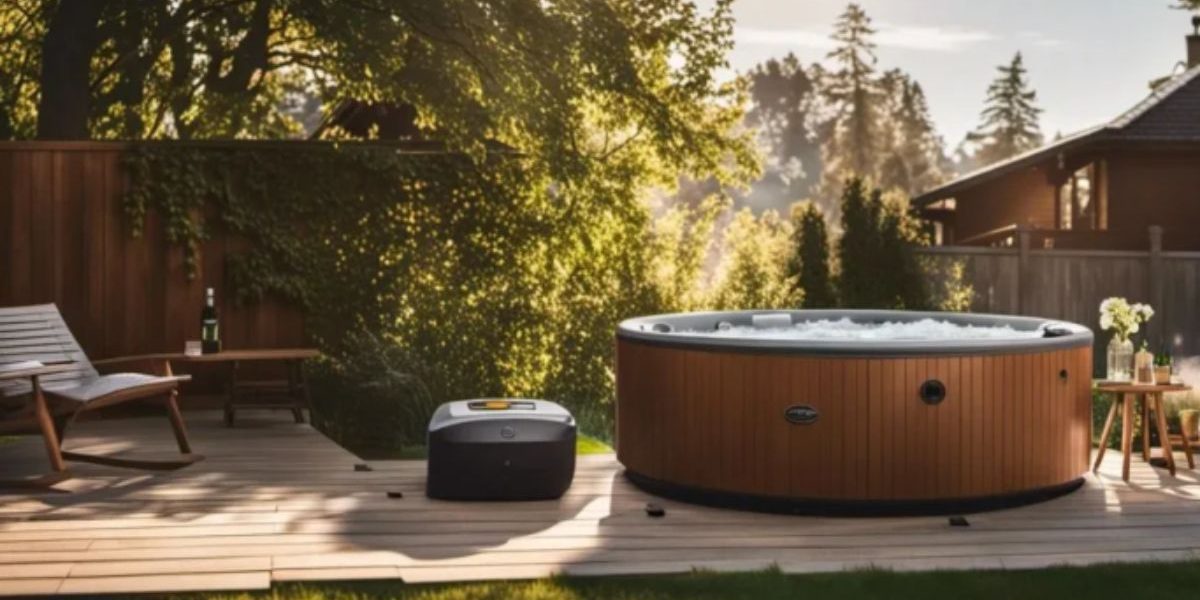
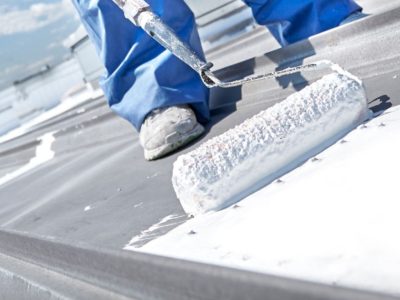

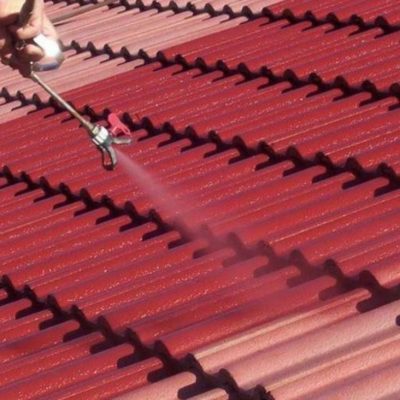

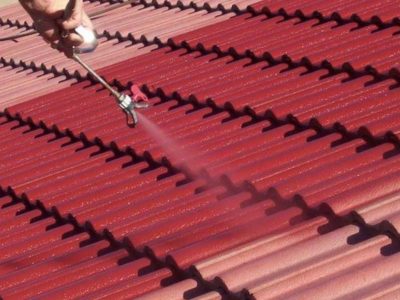

Comments